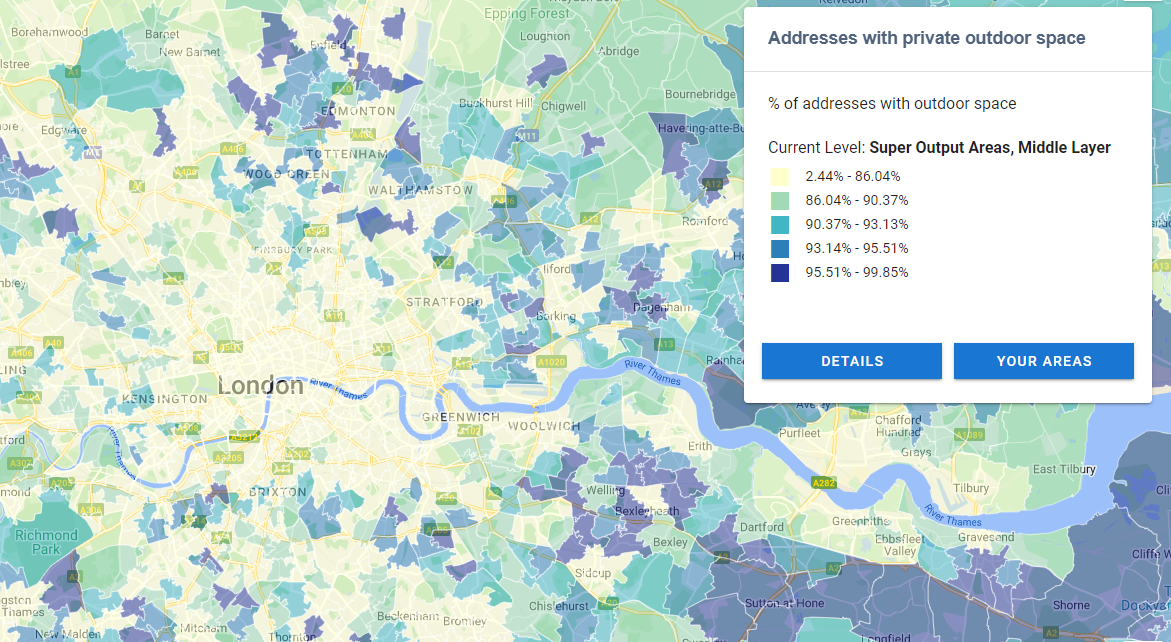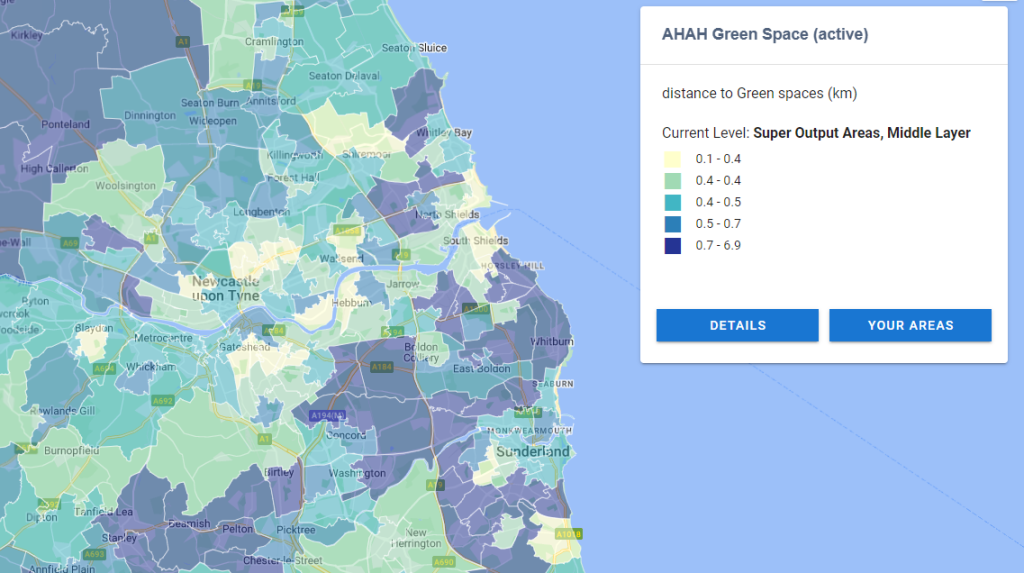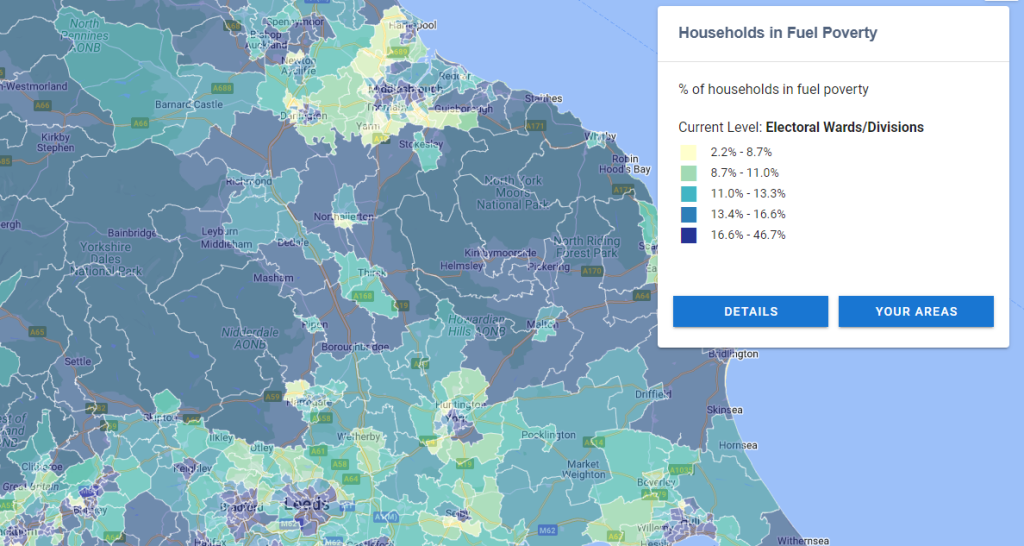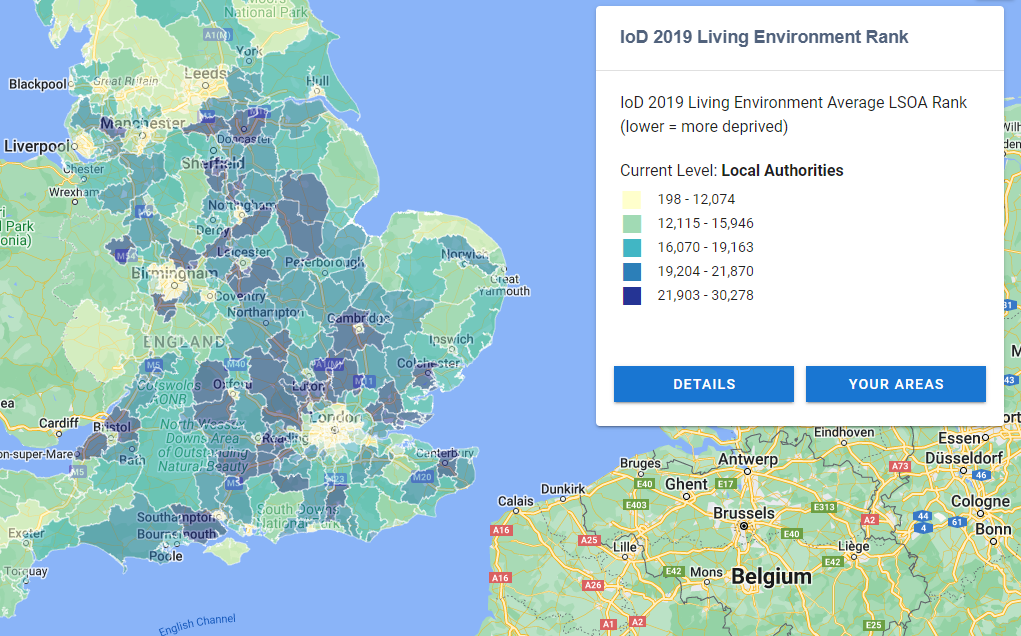
This selection of indicators looks at some of the small-area data available related to living environments that may be useful in identifying areas where higher proportions of residents are experiencing poorer living conditions and without easy access to outdoor space.
All of the datasets below are available in Local Insight for any area you care about – whether that is wards, parishes or towns. Book a demo to find out more.
Source: Ordnance Survey
How often updated: Irregular

This indicator shows the proportion of addresses with access to private outdoor space (for both houses and flats). Data is based on analysis of Ordnance Survey (OS) data on access to private gardens, public parks and playing fields in Great Britain, available by country, region, Local Authority and Middle Layer Super Output Area.
This is a useful indicator for identifying areas where a high proportion of addresses do not have outdoor space, to ensure that public green spaces in these areas are fit for purpose and are prioritised for receiving additional support.
Source: Consumer Data Research Centre (CDRC)
How often updated: Irregular

This indicator is an input measure for the Access to Healthy Assets and Hazards (AHAH) index as part of the Physical Environment domain, published by CDRC.
Figures are calculated as the nearest distance from Green Space. Active green spaces refer to recreational opportunities involving moderate to high intensity use requiring modification of natural landforms and the provision of service facilities, playing fields or equipment.
Within Local Insight, there is also a Passive Green Space indicator, which refers to recreational opportunities that occur in a natural setting requiring minimal development or facilities and providing areas for informal, self-directed activities for individuals or small groups.
Source: Department for Business, Energy and Industrial Strategy
How often updated: Annually

This indicator shows an estimate of the number of households in Fuel Poverty and therefore may struggle to afford to heat their home.
The definition of fuel poverty is based on the Low Income High Costs framework, where a household is in fuel poverty if a) their required fuel costs are above average (the national median level), and b) were they to spend that amount they would be left with an income below the official poverty line.
The indicator is estimated using regional data from the English Housing Survey and modeled down to local areas based on characteristics of the local area.
Source: Ministry of Housing Communities and Local Government (MHCLG)
How often updated: Irregular

The Indices of Deprivation (IoD) 2019 Living Environment Deprivation Domain measures the quality of the local environment. There are three indicators available in Local Insight; Overall Living Environment rank, Indoors sub-domain and Outdoors sub-domain.
The ‘indoors’ living environment measures the quality of housing and includes ‘Houses without central heating’ and ‘Housing in poor condition’.
Whereas the ‘outdoors’ living environment contains measures of air quality and road traffic accidents involving injury to pedestrians and cyclists.
Data displays as an average LSOA rank, a lower rank indicates that an area is experiencing higher levels of deprivation.
All of these datasets and more are available to use in Local Insight.
We have added a new indicator that measures childcare accessibility in England…
More
In the latest round of updates made to Local Insight, we’ve introduced…
More
We’ve introduced a new feature to Local Insight – a Share button…
More